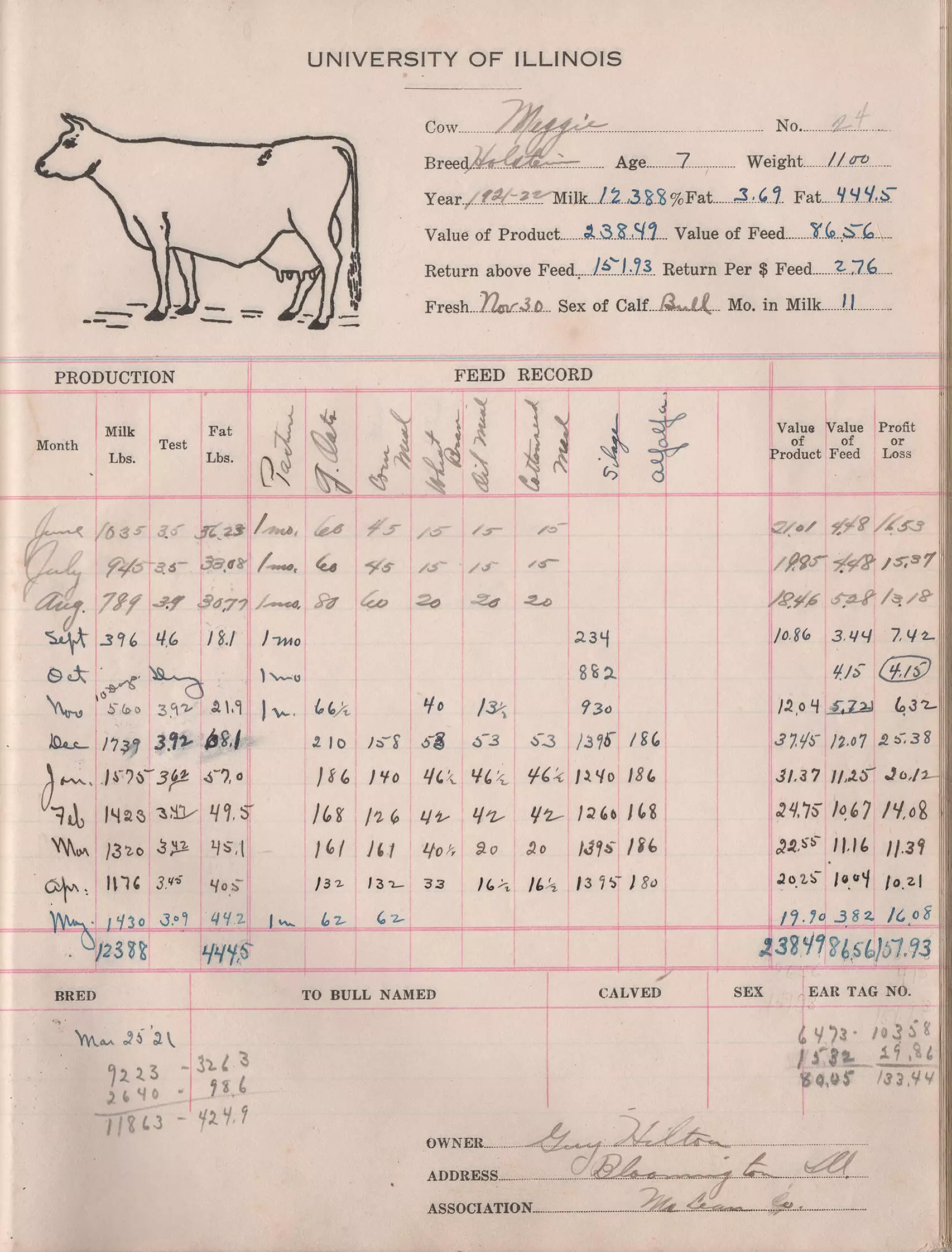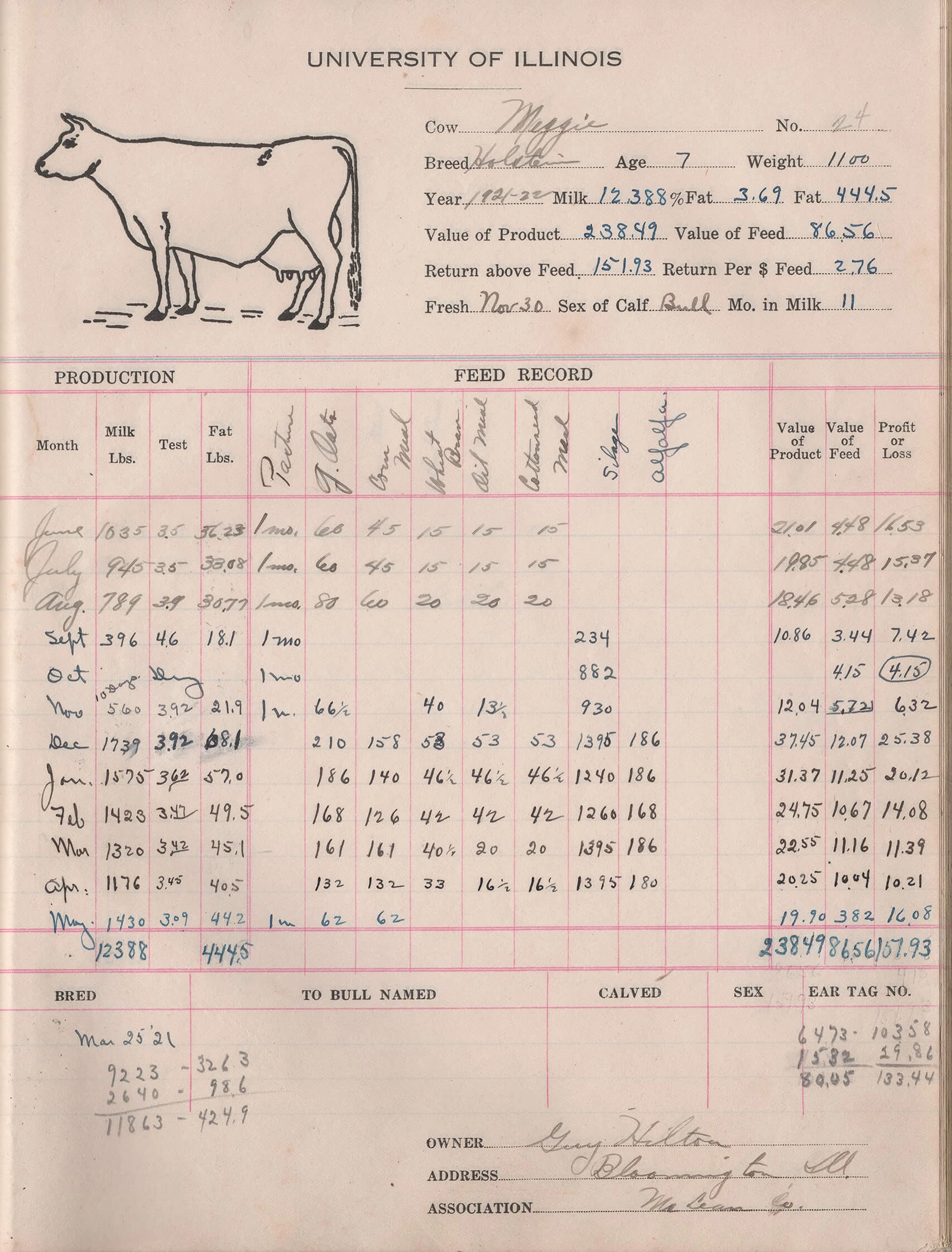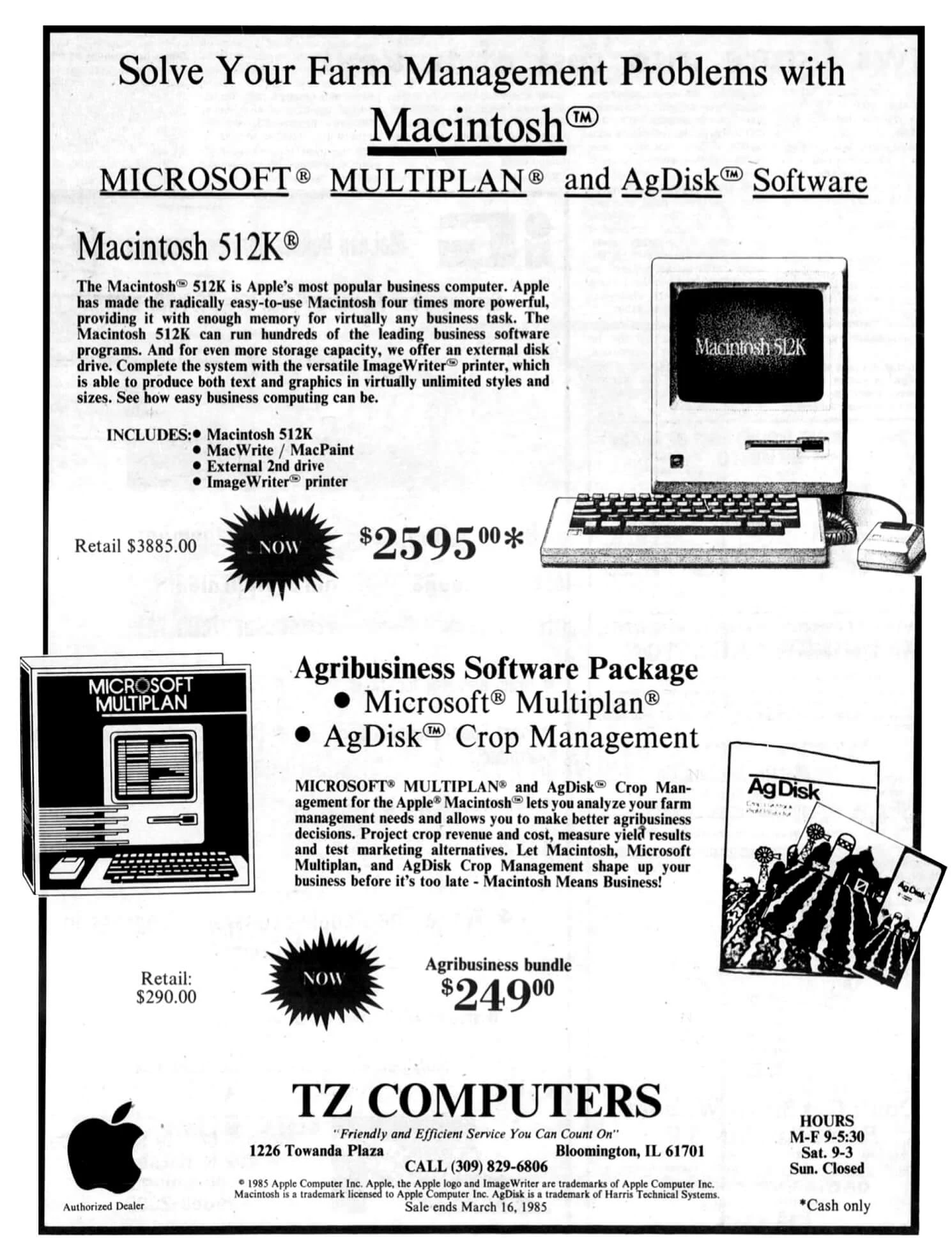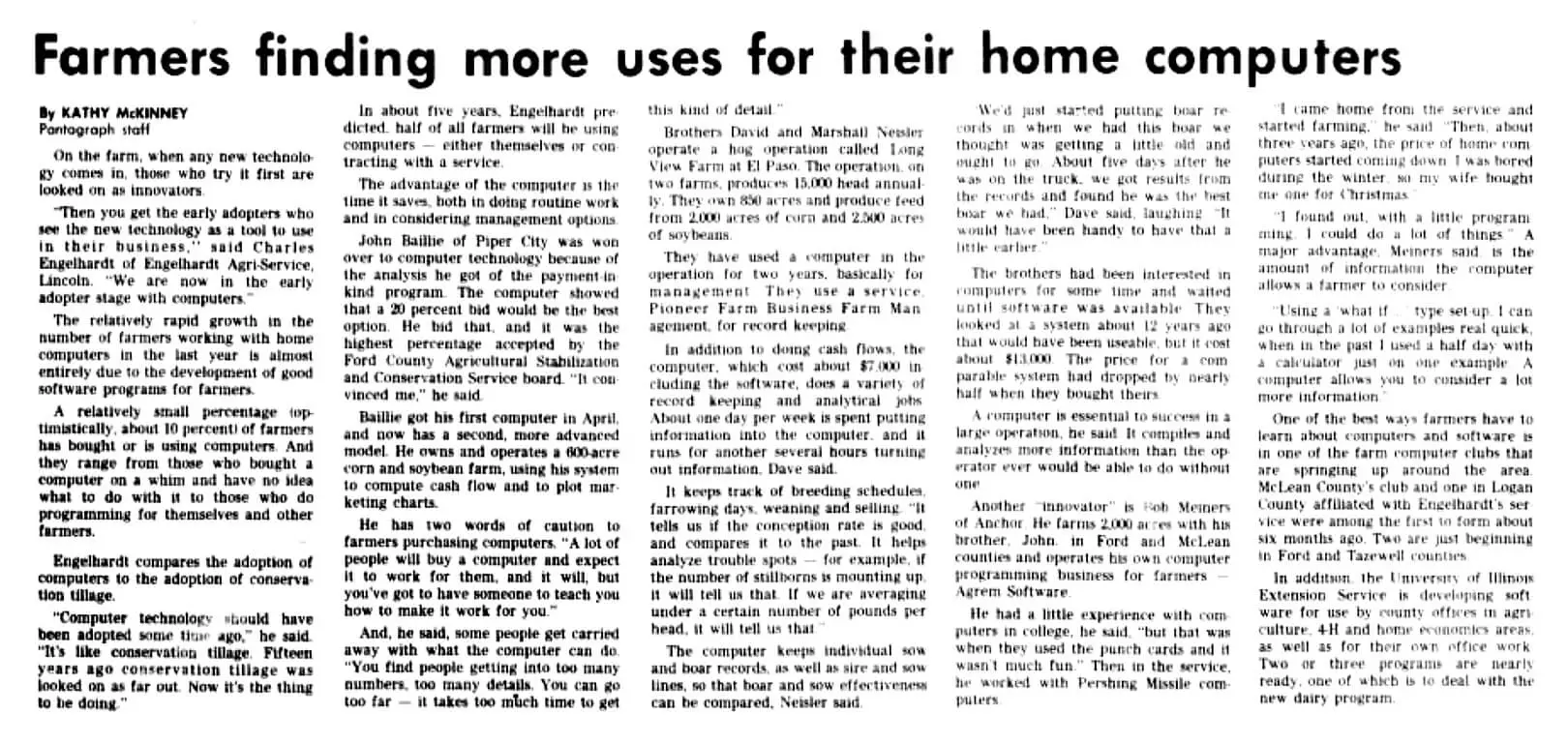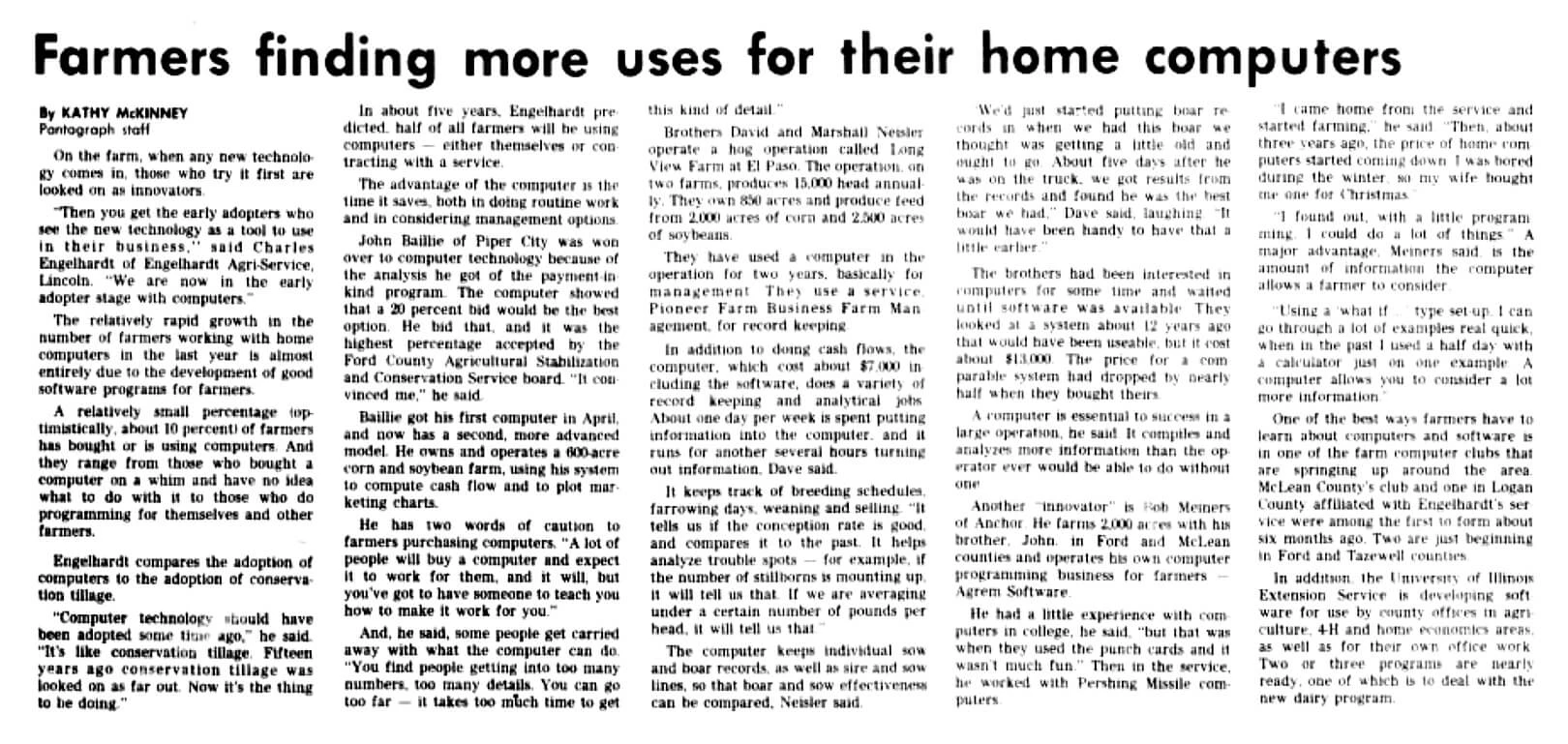Farming Resources – Social Groups, Organized Groups, and Associations
McLean County Dairymen Association
With the purpose of improving their herds, the McLean County Dairymen Association was formed in 1920.
The association recorded feeding practices and the output of each cow in a herd in order to determine best practices and eliminate non-production cows.
Farmers’ Institutes provided farmers with valuable data emerging from the University of Illinois agricultural research department.
Established by the Illinois General Assembly in 1895, the Institutes led to the formation of county based Farm and Home Bureau organizations, each with their own agent.
Those who attended Farmers’ Institute programs heard from experts on a variety of ag-related subjects. The Institutes also issued informative bulletins and reports.
The two-day winter Institute for 1904 was held at Hoopes hall in Bloomington, and included programs on soil fertility, hog raising, corn culture, farm mechanics, and the business of farming.
It also included home health and science programs for women.
McLean County farmers established the 100 Bushel Corn Club in 1952.
They encouraged each other to reach the goal of 100 bushels of corn per acre on their entire farm and recognized farmers who achieved this average in any given year
In March of 1954 Gene Mosbacher, McLean County U of I Extension Advisor, awarded certificates to Newell Henderson (left) and Merle Kuehling (second from left) during their annual banquet.
Cooperative Livestock Shipping Association
McLean County farmers formed the Cooperative Livestock Shipping Association in 1920 in order to gain more control over their shipping costs.
The organization boosted their buying and selling power by also forming a partner organization, the McLean County Livestock Marketing Association.
McLean County No-Till Club
In the 1980s, area farmers formed the McLean County No-Till Club, later renamed the T-Till Club.
Members shared herbicide and seed strategies and no-till machinery adaptations in an effort to reduce soil erosion.
“The best part of our club is our discussions...the members are more interested in discussing their failures than their successes. They just hope somebody else can provide a solution.”
— Shirley farmer Terry Schneider
Bloomington Pantagraph, January 9, 1986
 Making a Home
Making a Home
 A Community in Conflict
A Community in Conflict
 Working for a Living
Working for a Living
 Farming in the Great Corn Belt
Farming in the Great Corn Belt
 Abraham Lincoln in McLean County
Abraham Lincoln in McLean County
